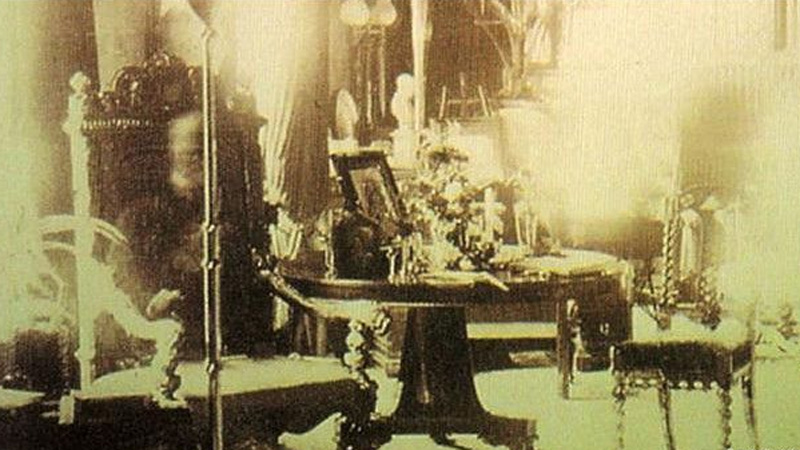(www.historiasreales.net) Technology is not all wonders and you have to admit it. In the beginning of photography, photographers have used editing techniques to deceive the unbelieving and sometimes even skeptical in some cases focusing on this post in the example of the photography of spirits.
The photography of spirits was a tendency in which the photographer edited photographs in order to recreate ghosts or to place figures of spirits next to human beings.
These images were often done with a double exposition technique, where one overlaps the other, as layers. Clients believed that the spirits of loved ones who had passed away communicated with them through these photographs.
The first photographer of spirits was Guillermo Mumler, who discovered the technique of double exposure in 1860, with which he managed to make ghostly figures in several photographs. Mumler was a jewelry engraver and an amateur photographer who was developing a self-portrait when he noticed the appearance of who must have been his cousin who had died 12 years earlier.
Mumler carried out his business with his wife, considered a prominent medium. He took photographs of people and then altered negatives using other images to make "spirits" appear with the people portrayed. Mumler was finally exposed as a fraud after Boston residents, who were still alive, were identified as "spirits" in their photographs.
He was also accused of breaking into people's houses to steal photos of the deceased, and then added them in his photographs.
In 1869, Mumler was tried for fraud. However, there was insufficient evidence to condemn him further, his career ended after the scandal.
Mumler's most famous photo shows Mary Todd Lincoln with what is supposed to be the ghost of her late husband, Abraham Lincoln. There are two stories of how the image was achieved. According to one, Mary Todd Lincoln was using the pseudonym "Mrs. Tundall" when her picture was taken and Mumler did not notice who it was until the picture was edited. While according to another story, the photograph was taken early in 1870 with Mrs. Lincoln using the name "Mrs. Lindall", and Mumler's wife encouraged her to identify the figure of her husband in the photo. This famous photograph continues to circulate, despite being recognized as a farce.
In the 1870s photography of spirits became famous in much of Europe, where it became an even more disturbing type of art. Spirit photography was being endorsed by psychics and mediums, but also by some leading scientists in society, they claimed that spirits could take shape through a substance called ectoplasm, a term that was coined by a Nobel Prize winner, The French physiologist Charles Richet.
According to the spiritualists, it was a substance that was externalized through certain body orifices of the medium that attended the patient during a session. It could be visualized as a vapor in nature, taking the shape of a hand or a face. Although in all the existing photographs, it was more like a piece of gauze, tulle ...
After Charles Richet was appointed chairman of the Society for Psychical Research in the United Kingdom, he began a study and research of well-known media such as Eva Carrière and Linda Gazzera and stated that Gazzera was a genuine medium that had been reported moving objects during sessions . Gazzera was exposed as a fraud in 1911 and the skeptics accused Richet of being deceived by the tricks of fraudulent means. He returned to Paris where he became president of the International Institute of Metaphysics.
The ectoplasm often proved fraudulent. The media use fairly harmful methods to swallow and regurgitate like cloths, softened products with potato starch or even paper, egg white or butter.
The famous magician Harry Houdini was one of many researchers who actively sought to expose ectoplasm as a hoax. He himself had used it in many of his tricks and knew that his success was due to the power of suggestion.
The constant exposures of fraud related to the ectoplasm sessions caused a rapid decrease of the demand of this type of activities. Although a scandal regret and allegations of fraud, the photography of spirits remained popular until the end of the movement of spiritism in the twenties. And although the images are known to be false, they remain relics of the time and remain fascinating reasons for study.
Although it would be normal to see these photos feel a chill, the fashion of that time helps the protagonists of these images leave us a strange feeling. If you liked this post do not forget to comment and share with your friends!
Fuente: www.historiasreales.net
